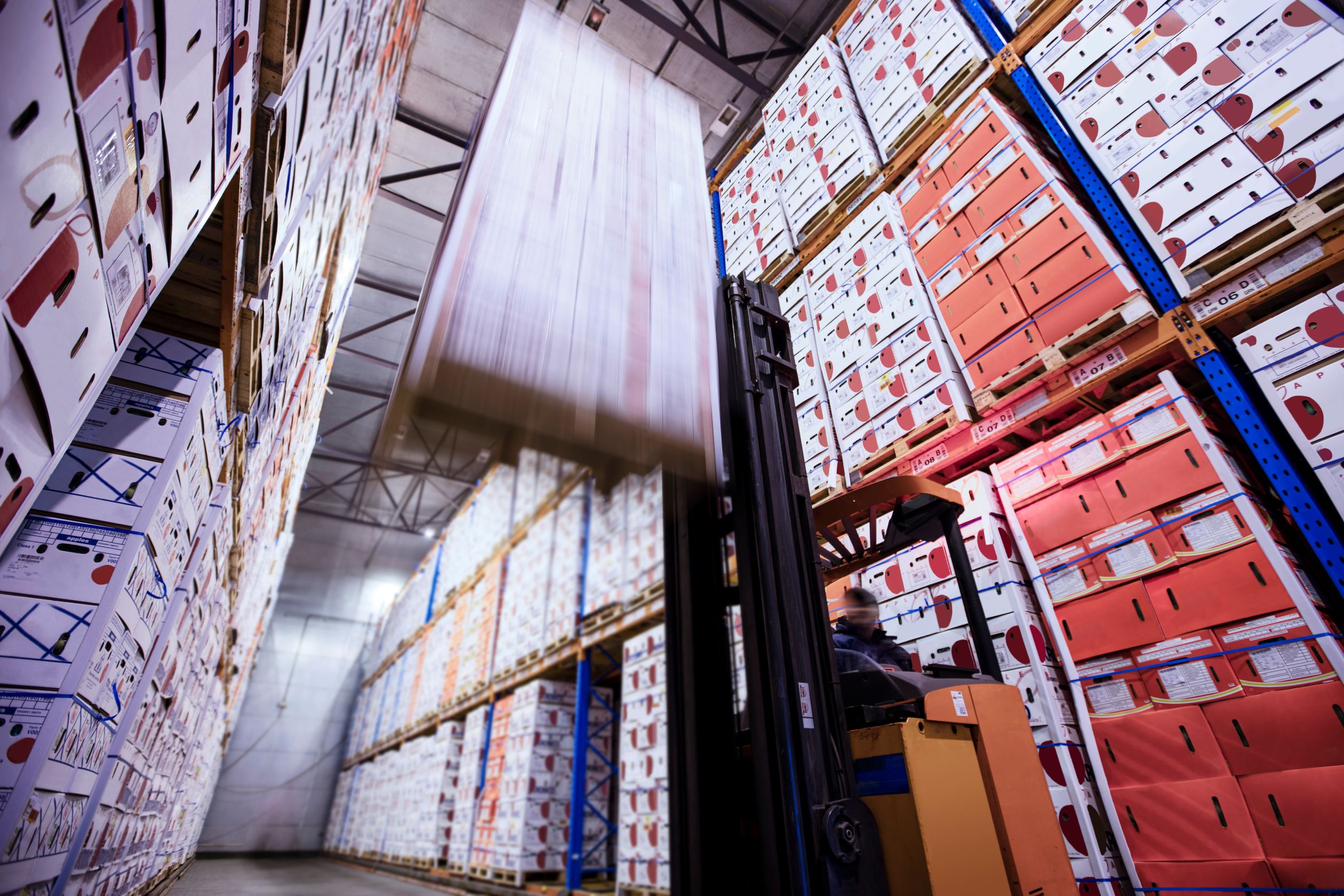The cold chain has always been a high-stakes environment where a single temperature excursion can lead to significant product loss, regulatory issues, and damaged brand reputation. But 2025 marks a pivotal moment. The convergence of new regulations, explosive e-commerce growth, and advanced pharmaceuticals is pushing logistics to a new frontier. To stay competitive, companies can no longer rely on legacy systems. Embracing the latest cold chain innovations is now essential for survival and growth. In this guide, we explore how transformative technologies and strategies are shaping the future of temperature-controlled logistics. Furthermore, we highlight key advancements that businesses need to adopt in order to stay competitive.
Why 2025 is a Tipping Point for the Cold Chain
Several powerful forces are converging to reshape the landscape for perishables. Understanding them is key to preparing your operations for what’s next.
- Regulatory Pressure: The FDA’s Food Safety Modernization Act (FSMA) continues to evolve, with increasing emphasis on tech-enabled traceability and preventative controls. Simultaneously, Good Distribution Practices (GDP) for pharmaceuticals demand more granular data on temperature, humidity, and location throughout the entire supply chain.
- E-Grocery Expansion: The direct-to-consumer model for groceries and meal kits is no longer a niche market. This boom has created a complex last-mile delivery challenge, requiring cost-effective and reliable temperature control for millions of individual orders.
- The Rise of Biologics: Advanced therapies, including cell and gene therapies and mRNA vaccines, have ultra-low temperature requirements (often -70°C or below). These high-value products demand unprecedented precision and real-time monitoring.
Sensor Technology and Real-Time Visibility
Static temperature logging is becoming obsolete. The future is about dynamic, end-to-end visibility.
Advanced Sensor Technologies
- Bluetooth Low Energy (BLE): These small, affordable sensors can be placed on individual pallets or even product cartons. They transmit data to nearby gateways (like a driver’s smartphone or a fixed reader in a warehouse), providing a cost-effective way to monitor conditions without manual scanning.
- Ultra-Wideband (UWB): Offering far greater precision than GPS or Wi-Fi, UWB technology allows for real-time location tracking of assets down to the centimeter level inside a warehouse or distribution center. This is critical for preventing mix-ups and ensuring First-In, First-Out (FIFO) protocols are followed.
- Printable Sensors: Emerging printable and disposable sensor labels are quickly becoming commercially viable. Moreover, these ultra-thin sensors can be seamlessly integrated directly into packaging, thereby providing item-level temperature monitoring at a fraction of the cost of traditional loggers.
As a result, real-time visibility platforms aggregate this sensor data, providing a single source of truth. Consequently, logistics managers can see the location and condition of every shipment on a live dashboard, receiving instant alerts for any temperature deviations.
AI and Machine Learning: From Reactive to Predictive
Artificial intelligence is turning cold chain data into a predictive tool. Instead of just reacting to temperature alerts, AI can anticipate problems before they happen.
Spoilage Prediction
By analyzing historical data on temperature, humidity, transit times, and product type, machine learning models can predict the remaining shelf life of a perishable product with remarkable accuracy. This allows for proactive decision-making, such as rerouting a shipment at risk of spoilage to a closer distribution center.
Dynamic Routing and Optimization
AI algorithms can analyze real-time traffic, weather patterns, and port congestion in order to dynamically optimize delivery routes. For example, for a reefer truck, this might mean avoiding a forecasted heatwave or a traffic jam, both of which could strain the refrigeration unit and, as a result, risk product integrity.
Sustainable Refrigeration Solutions
With mounting pressure to reduce carbon footprints, the industry is moving away from traditional hydrofluorocarbons (HFCs), which are potent greenhouse gases.
- Natural Refrigerants: CO2 transcritical systems and ammonia (NH3) are gaining traction in warehousing and transport. They have a significantly lower Global Warming Potential (GWP).
- Hydrofluoroolefins (HFOs): These synthetic refrigerants offer a lower GWP alternative to HFCs and can often be used as a drop-in replacement in existing equipment, easing the transition.
- Solar-Assist Transport: Solar panels installed on trailer roofs can supplement the power needed for the transport refrigeration unit (TRU); consequently, this reduces fuel consumption and emissions.
- Phase-Change Materials (PCMs): These advanced materials can absorb and release thermal energy, thereby maintaining a specific temperature for extended periods. As a result, PCMs are increasingly used in reusable passive shippers, providing a reliable and, moreover, more sustainable alternative to single-use solutions.
Breakthroughs in Cold Chain Packaging
Packaging is the first line of defense. Innovations are focused on improving performance while reducing environmental impact.
Recyclable Insulated Shippers
Companies are actively moving away from expanded polystyrene (EPS) foam coolers. Consequently, new solutions are emerging, utilizing materials like curbside-recyclable paper fibers or biodegradable cornstarch foam. Notably, these alternatives offer comparable thermal protection without the significant environmental baggage.
Antimicrobial Liners
Active packaging technology is on the rise. Liners and films infused with natural antimicrobial agents can help inhibit the growth of bacteria and mold, extending the freshness of produce and proteins. This adds another layer of protection, especially for long-haul shipments.
Ready to see how these packaging solutions could fit your operation? Consider booking a consultation to explore your options.
Warehouse Automation for Cold Environments
Labor shortages and the growing need for efficiency are increasingly driving automation into cold storage facilities, which are known for being notoriously harsh working environments.
- Automated Storage and Retrieval Systems (AS/RS):Essentially, high-density AS/RS solutions are ideal for freezer environments. That’s because they use robotic cranes and shuttles to store and retrieve pallets, thereby reducing the need for human operators in sub-zero conditions. Consequently, this improves safety and maximizes storage space.
- Robotics: Autonomous Mobile Robots (AMRs) can transport goods from receiving to storage or from picking areas to packing stations. Furthermore, some are even designed for “goods-to-person” picking, where the robot brings the required inventory to a stationary worker in a less extreme temperature zone.
Modal Shifts: Optimizing the Journey
The mode of transport is also evolving to meet new demands for speed, cost-effectiveness, and reliability.
- Refrigerated Rail (Reefer Rail): For long-haul domestic routes, refrigerated intermodal rail is a cost-effective and more sustainable alternative to over-the-road trucking.
- Short-Sea Shipping: Specifically, in coastal regions like Europe and Southeast Asia, using smaller container ships for temperature-controlled transport between nearby ports can help bypass road congestion and, consequently, reduce emissions.
- Specialized Air Pharma Services: Airlines are investing heavily in dedicated pharma corridors and certified handling procedures to meet the strict requirements for shipping high-value biologics and clinical trial materials.
The Critical Role of Data Standards and Interoperability
All this technology generates a massive amount of data. Without standardization, it becomes a “digital Tower of Babel.” That’s where global standards come in.
GS1 is the global standards organization that develops and maintains standards like the Global Trade Item Number (GTIN) and the Serial Shipping Container Code (SSCC). Their EPCIS 2.0 standard is a game-changer for traceability. It provides a common language for sharing event data (what, where, when, and why) across disparate systems, enabling true end-to-end visibility from the farm or lab to the final consumer.
Risk Management and Regulatory Compliance
Technology is a powerful enabler for compliance. Indeed, real-time data logging and automated reporting make it easier to meet regulatory requirements.
- Hazard Analysis Critical Control Point (HACCP): Digital systems can automatically monitor designated Critical Control Points (like temperature during storage or transit) and create an incorruptible log for audits.
- FSMA & GDP: Continuous monitoring and event-sharing via EPCIS 2.0 provide the robust traceability and documentation required by the U.S. Food and Drug Administration and global GDP guidelines for pharmaceuticals. These systems create a “digital chain of custody” that proves a product was maintained under the correct conditions.
- International Standards: Adhering to guidelines from bodies like the International Air Transport Association (IATA) for pharma airfreight or the Safe Quality Food (SQF) Institute for food producers is simplified with centralized data platforms.
Your Roadmap to a Modern Cold Chain: How to Get Started
Adopting these cold chain innovations can seem daunting. Here’s a practical, phased approach to get you started.
- Assess Your Current State: Begin with a comprehensive audit. Where are your biggest vulnerabilities? Is it last-mile delivery? Cross-docking inefficiency? Lack of real-time visibility?
- Prioritize a Pilot Project: Don’t try to boil the ocean. Select one high-impact area for a pilot project. For example, implement BLE sensors on a single critical shipping lane to prove the ROI of real-time visibility.
- Focus on Data Integration: Therefore, it’s crucial to choose technology partners who prioritize open APIs and adhere to global standards like EPCIS 2.0. Ultimately, your goal should be a unified data platform, not a collection of siloed systems.
- Develop a Scalability Plan: Once your pilot is successful, it’s time to move forward and create a detailed roadmap for rolling out the technology across your network. This process includes important steps such as training staff, updating SOPs, and establishing new KPIs to ensure a smooth implementation.
- Embrace a Culture of Continuous Improvement: The logistics landscape will continue to evolve. Therefore, it’s essential to foster a culture that regularly reviews performance data. Additionally, seek out new technologies and processes to further enhance efficiency, sustainability, and reliability.
Want a structured way to evaluate your operation?
Key Takeaways for 2025 and Beyond
- Visibility is Non-Negotiable: Indeed, real-time, end-to-end visibility is moving from a luxury to a baseline expectation.
- Data is Your Most Valuable Asset: Leverage AI and ML to turn historical and real-time data into predictive insights.
- Sustainability Drives Innovation: Eco-friendly refrigeration and packaging are becoming sources of competitive advantage.
- Automation is Key to Scalability: Indeed, robotics and automation are essential for expertly handling increased volume and mitigating labor challenges, especially in demanding cold environments.
- Interoperability Unlocks Value: Adopting global data standards is the only way to achieve seamless collaboration across the supply chain.
The future of the cold chain is intelligent, interconnected, and sustainable. Companies that embrace these cold chain innovations will lead the industry for years to come.
Is your supply chain ready for the future? Contact LCX Fresh today Get a readiness assessment to build a stronger, more efficient cold chain.





